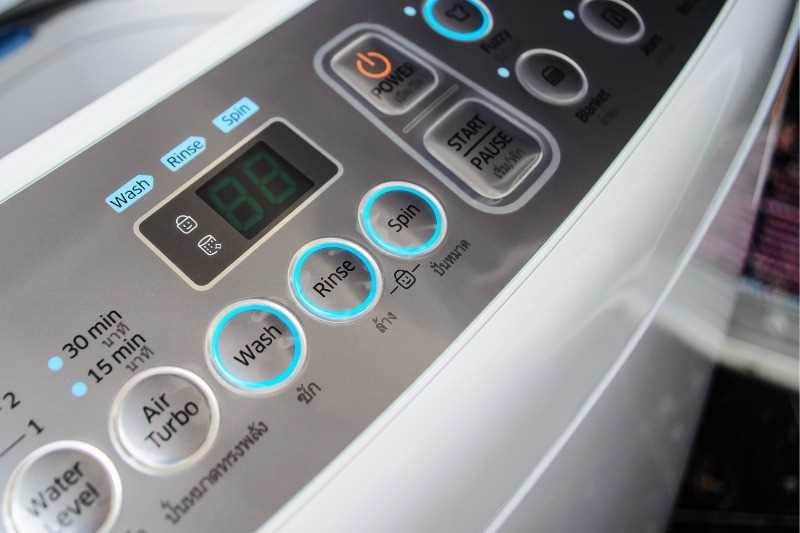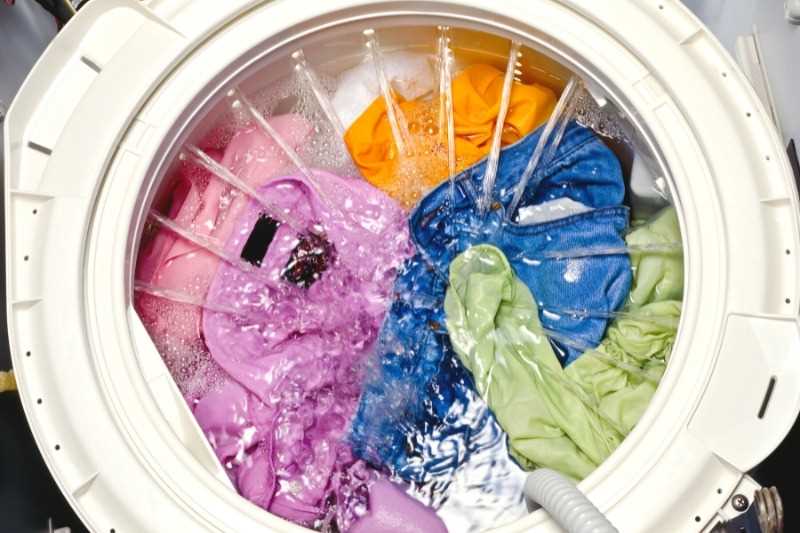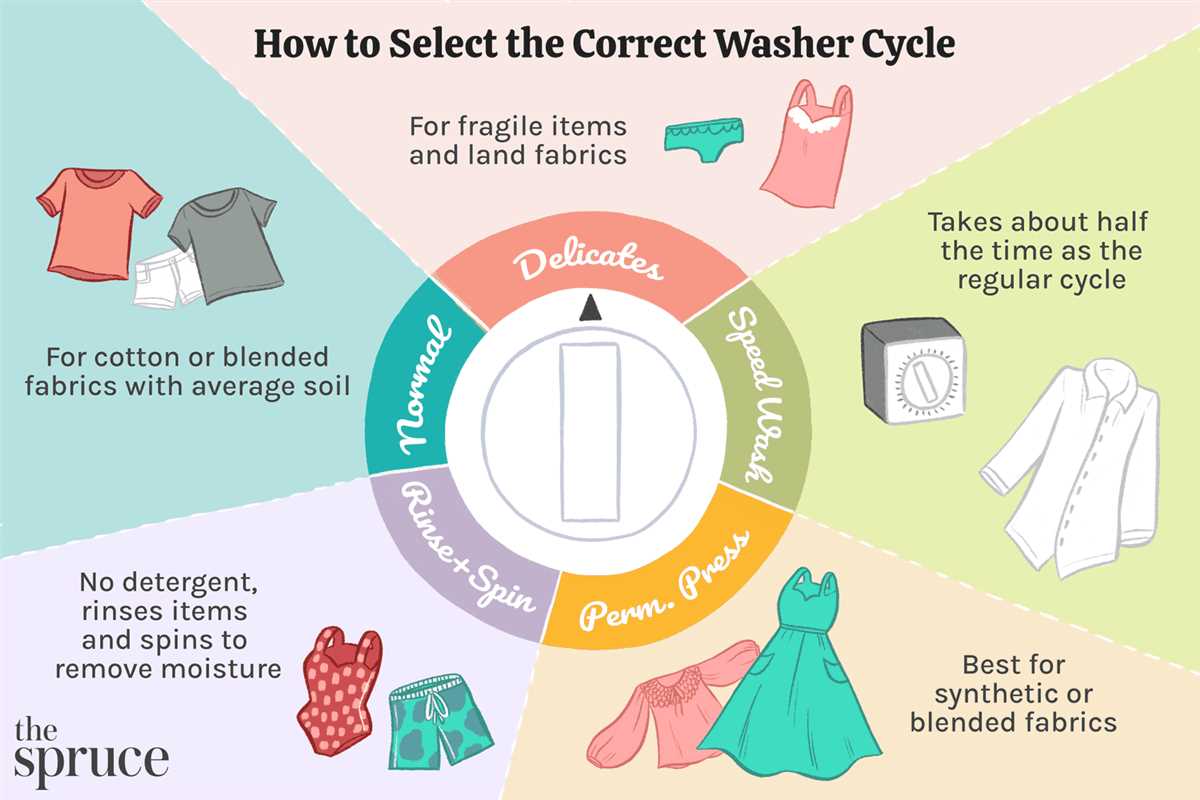


When it comes to doing laundry, understanding the different settings on your washing machine is essential for getting your clothes clean and well-maintained. One important distinction to understand is between the wash and rinse settings, as they serve distinct purposes in the laundry process.
The wash setting is where the actual cleaning of your clothes takes place. This is where the machine agitates the clothes with water, detergent, and sometimes additional additives, such as fabric softener. The agitation helps to remove dirt, stains, and odours from the fabric.
On the other hand, the rinse setting is responsible for removing the detergent and any remaining residues from the fabric. During the rinse cycle, the washing machine will fill with water and agitate again, but this time without detergent. The goal is to thoroughly rinse out any lingering soap or other cleaning agents.
Understanding the distinction between wash and rinse settings is important for a couple of reasons. First, it ensures that your clothes are properly cleaned. If you don’t use the wash setting, your clothes won’t receive the necessary agitation to remove dirt and stains. And if you skip the rinse setting, your clothes may come out of the machine with a soapy residue that can be irritating to the skin and attract more dirt.
Second, using the wash and rinse settings correctly can help prolong the life of your clothes. By properly washing and rinsing your garments, you can remove dirt, oils, and sweat that can damage the fabric over time. This can help prevent premature wear and keep your clothes looking their best for longer.
In conclusion, understanding the distinction between wash and rinse settings in a washing machine is crucial for achieving clean and well-maintained clothes. The wash setting removes dirt and stains, while the rinse setting ensures that all detergent residues are thoroughly removed. By using these settings correctly, you can not only keep your clothes clean but also extend their lifespan.
Understanding the Distinction between Wash and Rinse Settings

Introduction

When using a washing machine, it’s important to understand the distinction between the wash and rinse settings. While these settings may seem similar, they serve different purposes and play a crucial role in achieving clean and fresh laundry.
Wash Setting
The wash setting is the initial stage of the washing process. It is responsible for removing dirt, stains, and odors from the clothes. During this setting, the washing machine agitates the clothes in a mixture of water and detergent. The agitating motion helps to dislodge dirt and grime from the fabric of the clothes, allowing the detergent to penetrate and remove them effectively.
- The wash setting may have different options such as regular, gentle, or heavy-duty, depending on the type and level of soiling on the clothes.
- It’s important to follow the manufacturer’s instructions for the appropriate amount of detergent to use for each wash setting.
Rinse Setting
The rinse setting follows the wash setting and is responsible for removing the detergent residue from the clothes. During this setting, the washing machine fills with clean water and rinses the clothes thoroughly. The main purpose of the rinse setting is to ensure that all traces of detergent are removed from the fabric, leaving it clean and fresh.
- The rinse setting may also have different options, such as an extra rinse or a fabric softener rinse.
- An extra rinse can be useful for people with sensitive skin or those who want to ensure all traces of detergent are removed.
- A fabric softener rinse helps to add a pleasant scent and soften the fabric.
Conclusion
Understanding the distinction between wash and rinse settings in a washing machine is essential for achieving clean and fresh laundry. The wash setting removes dirt and stains, while the rinse setting ensures that all traces of detergent are removed from the fabric. By using the appropriate settings for different types of clothes and levels of soiling, you can ensure that your laundry comes out clean and smelling great.
Importance of Proper Washing
Proper washing is crucial for maintaining the cleanliness and longevity of your clothes. It is important to understand the distinction between wash and rinse settings in a washing machine to ensure that your clothes are cleaned effectively.
1. Removal of Dirt and Stains
One of the primary purposes of washing clothes is to remove dirt, stains, and odors. The wash cycle agitates the clothes, combined with detergent, to help loosen and break down these particles.
Using the correct wash setting is essential to ensure that your clothes are thoroughly cleaned. Different fabrics and types of clothes may require different wash settings, such as delicate or heavy-duty cycles.
2. Hygiene and Bacteria Removal
Washing clothes also helps to maintain hygiene and removes bacteria that can accumulate on fabrics. This is especially important for items like underwear, socks, and towels that come in close contact with our bodies.
Proper washing, including the use of hot water and appropriate detergents, can help eliminate bacteria and prevent the spread of infections and illnesses.
3. Preservation of Fabric Quality
Using the correct wash and rinse settings can help preserve the quality and appearance of your clothes. Over time, improper washing can cause fabrics to become worn, faded, or damaged.
By following the recommended wash instructions for different fabrics, you can extend the lifespan of your clothes and keep them looking their best.
4. Allergen Removal
Regular washing is essential for removing allergens such as dust mites, pollen, and pet dander from your clothes. These allergens can cause allergic reactions and respiratory problems in susceptible individuals.
Using the appropriate wash settings, along with hypoallergenic detergents, can help minimize allergen exposure and create a cleaner and healthier environment.
Conclusion
Proper washing techniques and understanding the distinction between wash and rinse settings are crucial for keeping your clothes clean, hygienic, and in good condition. By following the recommended instructions and using the appropriate settings, you can ensure that your clothes are thoroughly cleaned and maintained.
Difference between Wash and Rinse Settings
When using a washing machine, it is important to understand the difference between the wash and rinse settings. While both settings are essential for cleaning clothes, they serve different purposes in the laundry process.
Wash Setting
The wash setting in a washing machine is responsible for removing dirt, stains, and odors from clothes. This setting involves the agitation and movement of water, detergent, and clothes together to create a cleaning action. The wash setting typically consists of different cycles, such as normal, delicate, or heavy-duty, which adjust the intensity of the wash process based on the type of fabric and level of dirtiness.
During the wash cycle, the washing machine agitates the clothes by rotating or pulsating the drum, allowing the detergent to penetrate the fabric and break up any dirt or stains. This agitation helps remove dirt, sweat, oils, and other particles from the clothes, leaving them clean and fresh.
Rinse Setting
The rinse setting in a washing machine is responsible for removing detergent and any remaining residues from the clothes after the wash cycle. The rinse cycle typically involves the use of clean water without any added detergent.
During the rinse cycle, the washing machine fills the drum with water and agitates the clothes to remove any traces of detergent. This helps prevent skin irritation and ensures that the clothes are properly rinsed and free from detergent residues.
Importance of Differentiating Wash and Rinse Settings
Understanding the distinction between wash and rinse settings is crucial for achieving clean and well-rinsed clothes. When using the washing machine, it is important to select the appropriate wash cycle based on the fabric type and level of dirtiness. Additionally, using the rinse setting ensures the removal of detergent residues, which can cause skin irritation and reduce the longevity of the clothes.
By utilizing the wash and rinse settings correctly, you can ensure that your clothes are cleaned effectively and thoroughly, resulting in fresh and long-lasting garments.
Choosing the Right Setting
When it comes to choosing the right setting on your washing machine, it’s important to consider the type of fabric and level of dirtiness of your clothes. Here are some tips to help you make the best decision:
1. Sorting your clothes

- Separate your clothes based on color. Wash light-colored clothes separately from dark-colored ones to prevent color bleeding.
- Sort your clothes based on fabric type. Delicate fabrics, such as silk or lace, should be washed separately from sturdier fabrics like denim.
- Consider the level of dirtiness. Heavily soiled items may require a more powerful wash setting.
2. Understanding the settings
Most washing machines have different settings that vary based on speed, temperature, and cycle length:
- Normal/Cotton: This setting is ideal for everyday clothing made from cotton or synthetic fabrics.
- Delicates/Gentle: Use this setting for delicate fabrics like silk or lace.
- Heavy duty: For heavily soiled items or fabrics that require a deeper cleaning.
- Quick wash: A shorter cycle for lightly soiled clothes that need a quick refresh.
- Cold wash: This setting saves energy and is suitable for clothes that are not heavily soiled.
3. Consider the water level
Some machines allow you to adjust the water level depending on the load size. If you have a smaller load, using less water can save energy and water.
4. Read the garment care labels
Always check the garment care labels for any specific washing instructions. Some fabrics may require specific settings or may need to be hand washed or dry cleaned.
5. Trial and error
When in doubt, don’t be afraid to experiment with different settings to find what works best for your clothes. Keep track of the settings you used and how your clothes turned out to help you make better decisions in the future.
Remember, choosing the right setting on your washing machine is crucial to ensure that your clothes are cleaned effectively while maintaining their quality and durability.
Troubleshooting Common Issues
1. The Washing Machine Does Not Start
- Check if the washing machine is properly plugged into a power outlet.
- Make sure the power button is turned on.
- Check if the door of the washing machine is securely closed.
- Verify if the water supply is turned on.
2. Clothes Are Not Getting Cleaned
- Ensure that you are using the correct amount of detergent recommended for the load size.
- Check if the wash cycle selected is appropriate for the type of clothes and level of dirt.
- Inspect the water supply to ensure that it is adequate.
- Make sure the washing machine is not overloaded with clothes.
3. The Washing Machine Is Leaking
- Check if the hoses are properly connected and not damaged.
- Inspect the door seal for any signs of wear or damage.
- Ensure that the detergent dispenser is clean and not clogged.
- Make sure the washing machine is properly leveled.
4. The Washing Machine Shakes or Vibrates Excessively

- Check if the washing machine is properly leveled on the floor.
- Make sure the load inside the machine is evenly distributed.
- Verify if the transportation bolts have been removed from the back of the machine.
- Inspect the floor for stability and consider using anti-vibration pads.
5. The Washing Machine Does Not Drain
- Check if the drain hose is properly connected and not clogged.
- Ensure that the height of the drain hose is at the correct level.
- Inspect the drain pump for any debris or obstructions.
- Verify if the drain filter is clean and not blocked.
If you encounter any other issues not mentioned here, it is recommended to consult the washing machine’s user manual or contact a professional for further assistance.
FAQ
What is the difference between the wash and rinse settings in a washing machine?
The wash setting is used to agitate the clothes and remove dirt, stains, and odours. The rinse setting is used to remove detergent and any remaining dirt or soap residue from the clothes.
Can I skip the rinse cycle and only use the wash setting?
While it is technically possible to skip the rinse cycle and only use the wash setting, it is not recommended. The rinse cycle helps to ensure that all detergent and dirt are thoroughly removed from the clothes, leaving them clean and residue-free.
How long does the rinse cycle usually last?
The length of the rinse cycle can vary depending on the specific washing machine model and settings. However, on average, the rinse cycle usually lasts around 10-15 minutes.
Will using the rinse cycle make my clothes cleaner?
Using the rinse cycle after the wash cycle helps to ensure that all detergent and dirt residue is removed from the clothes, leaving them cleaner and smelling fresher. Skipping the rinse cycle may result in clothes that still have soap residue or dirt particles on them.
What should I do if my washing machine doesn’t have a separate rinse setting?
If your washing machine does not have a separate rinse setting, you can manually set it to do an extra rinse cycle. Alternatively, you can add an extra rinse cycle by pausing the machine after the wash cycle and restarting it with the same settings, but without adding any detergent.












